They Came by the Millions: How Our Readers Created Positive Impact in 2019
The Power of a Story. The Power of You.

Dear Readers,
It’s the close of yet another year. It is that time again — of new goals (or old), new resolutions (or not), new fitness regimes (or old yoga mats), new diet plans (or more water), and new promises (or old family rituals).
And while we gear up for a brand new decade in our own ways, the world also looks back to the best, the worst, and the unforgettable that happened in the 365 days gone by.
For us at The Better India, we go back to all the amazing stories of courage, determination, strength, and passion that we shared with you, and to understand the impact they created across the country and in so many lives.
So the question we are asking ourselves today is – What can a story do?
Here’s a snippet:
“The impact of The Better India‘s article on me? One of the best ways to describe it is this — Soon after the article, we received a call from a teacher of an unaided school located somewhere in the hills of Kullu. She spoke about her journey and how she takes a lot of pain to teach her students in the difficult conditions of the hills. And yet there she was, inspired by our story, talking to us and understanding how she could adopt digital learning for her students. Knowing how easy it is to do so, she is very keen to now implement digital learning in her school,” Rohit Prakash, co-founder, iDream Education.
While this might sound like just one call from one person, this particular anecdote made us think about the power of every story we cover. It is brilliant when you think about it.
One person gets motivated to adopt and educate the children of drought-affected farmers in a village; another person sitting thousands of kilometres away decides that they want to help and donate money; another person looking for some way to help society decides to go volunteer; and another witnessing similar problems in their surroundings decides to take inspiration and start something similar.
That’s it — that’s what the ripple effect of every strong story looks like. It can go to places one never imagines.
So let’s check out the impact created by just some of the many stories we covered in 2019. Big and small, these stories of change were made possible because of each one of you — whether you read a story, shared it, recommended it, asked your very distant relative to read it, or went ahead and took action on it.
Here’s to you and the people whose brilliance led to these stories in the first place. Look what you created:
1. A Lake Where There Was None:

This year, we launched The Lake Revivers Collective, an initiative by The Better India and Anand Malligavad, a Bengaluru resident who is working towards reviving at least 25% of lakes in Bengaluru by 2025.
The Collective is a community of believers and changemakers interested in saving India, one lake at a time. The initiative was launched with Gavi Kere, a 3-acre lake in Anekal Taluk of Bengaluru.
In less than two months after the launch of this campaign, people across the world donated and helped The Better India raise Rs. 17 Lakh to work on the lake.
Neglected and dilapidated, this lake was used as a dump yard for various industries for the past 30 years. Over the years, it had completely dried up and was full of solid chemical and industrial waste.
Today, thanks to the money you helped us raise, it has been rejuvenated – it is clean, well-constructed, and full with about 50% clear water. We are currently working on planting trees around the lake so that it can impact the ecology of the region and turn into a self-sustaining area.
2. The Much-Needed Talk About Sustainable Periods in Schools:
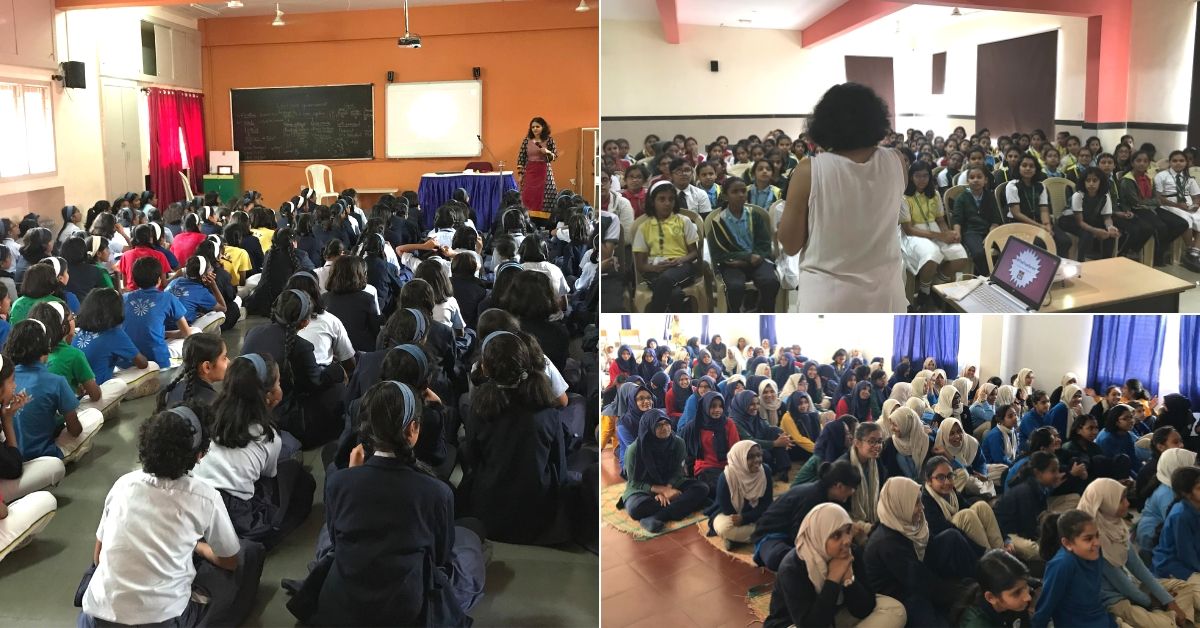
The Better India launched #FreePeriod, a campaign with private schools in Bengaluru to raise awareness about the use of sustainable menstrual products.
This was done with our belief that it is possible to change attitudes towards consumption and disposal on a large scale by showing people that an alternative way is possible.
Our idea was to help change the mindsets of girls from a young age, give them information on various sustainable options out there, and encourage them to embrace their periods with positivity.
Launched on Aug 15, 2019, experts working in the field of sustainability joined the campaign to speak with hundreds of girls in schools across the city, talking about period positivity, hygiene, and sustainable menstrual products.
1500 girls from different schools across the city have been reached out to as part of the campaign. We have also started an online pledge to change mindsets by raising awareness among the people about freedom against environmental damage and health concerns caused by disposable menstrual products.
Know all about the experts who worked with us here.
3: Diwali Cheer Where it Was Needed the Most:

With our campaign #DiwaliKarnival, The Better India and Karnival.com worked with our readers to send gifts to organisations doing incredible work across different sectors.
To make that happen, we got in touch with four NGOs across India and got a list of products they needed the most. We turned the requirements into a list of items that people could buy and send to each NGO with the hope of making their Diwali brighter and happier.
Together, we delivered orders worth Rs 75,000 to spread Diwali cheer. The NGOs we helped included Snehalaya, a children’s shelter home which fosters 250 children of sex workers and minors rescued from the sex trade; CARE Shelter, which is home to rescued animals in Bengaluru; NAWPC which is helping visually-impaired students become independent with higher education; and Urja Trust which is home to women who are victims of discrimination, domestic violence, sexual, and emotional abuse.
4. A Home for Kids of Drought-Affected Farmers
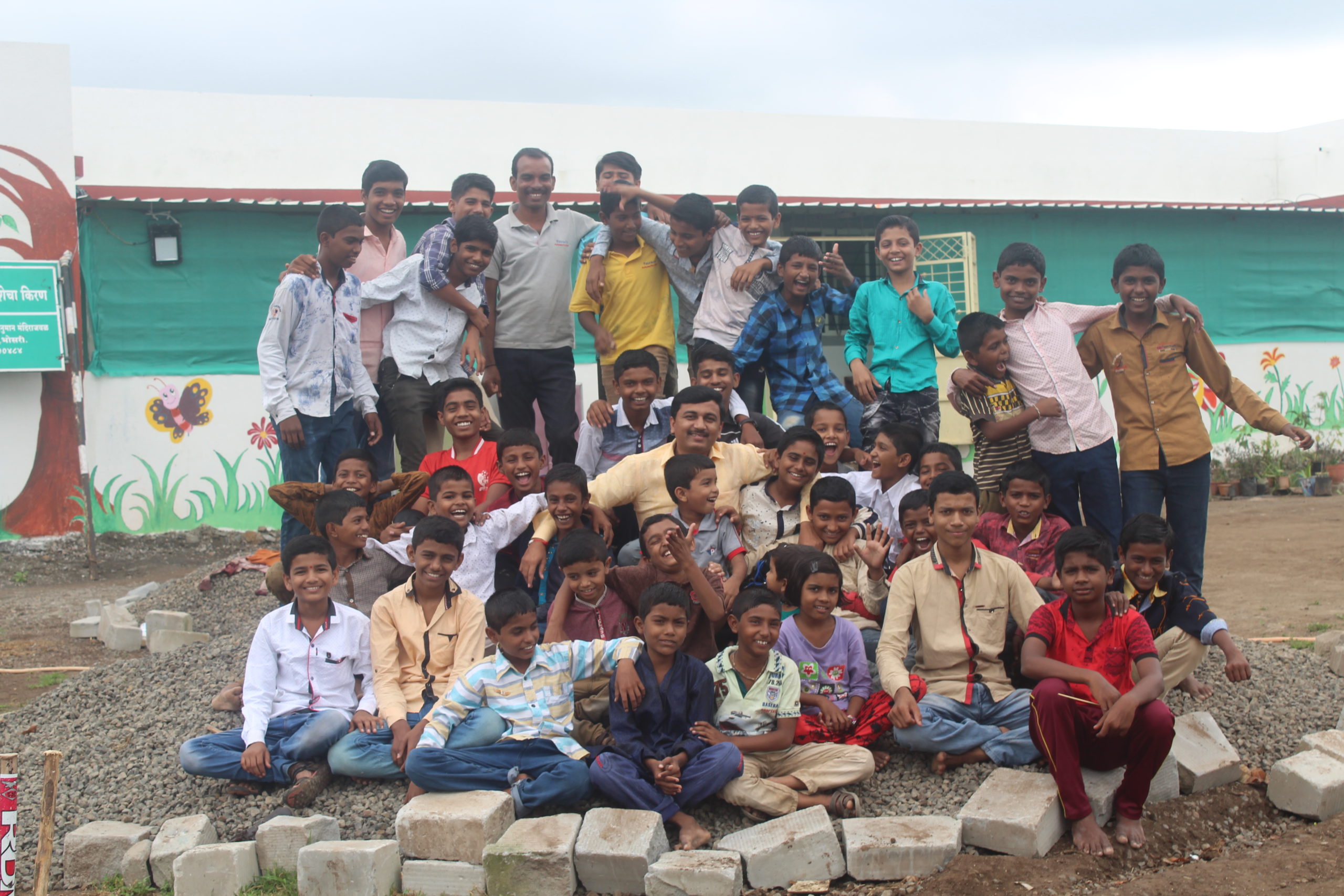
Some time ago, we published an article on Ashok Deshmane, who is the founder of Snehwan – a home and school for children of marginalised and drought-affected farmers.
Initially, Snehwan was home to 17 kids between 9-14 years old. Most of these kids had never been to school before. Ashok worked with them and taught them everything from scratch, taking complete responsibility for their education. After multiple coverages, Ashok informed us how our readers reached out to help him over the years, finally resulting in something that these kids would cherish forever:
“At a time when we had nothing in our hands, just two rooms and 17 children to accommodate, The Better India trusted us and covered our story. That is when other people started recognising us and supporting us. We got a lot of calls and queries on social media. We have seen a huge transformation over time.”
Post the coverage, Snehwan was able to raise Rs. 1.5 lakh through crowdfunding. Also, Dr. Kulkarni, one of their supporters, donated a 2-acre land where they constructed a residential facility for children.
Today they have 80 children with them, 50 of whom are residential and 30 are studying with them. They even provide facilities like a computer lab and skill development like dairy farming, composting and organic farming for the children to learn and grow.
5. Farmers with a Business Growing Like Never Before

Bhagwat, an organic farmer from Maharashtra’s Nasik district initiated a ‘farm-to-fork’ concept called ‘Vasundhara Sendriya Shetmal Sampadak Shetkari Ghat’.
It is a collaboration of close to 200 farmers that sets up organic farmers’ markets every 2-3 days a week in Mumbai. Bhagwat has also formed a WhatsApp group for his customers for faster and direct communication. This eliminates wastage and helps farmers skip middlemen. A day before the market, Bhagwat sends the pictures of the produce he will be carrying to the market on the WhatsApp group.
As per the response, Bhagwat and his team load their truck with fresh vegetables in demand for the day.
Bhagwat says “We got so many customers because of the article. Around 2,000 people must have called us from Pune, Mumbai, Nasik, and Odisha. I even got a call from Australia. An Indian settled there put me in touch with 10 people in Mumbai and they became our customers. So many people have called us to enquire if we can sell organic vegetables in their area. We have had to give a waiting period of two months to some people because of the increasing demands.”
Other than this, Mrinal Bhalerao, a woman who runs an NGO, approached the group and offered to buy them a vehicle to transport their produce and help them with other things related to marketing. While initially, they had a market just in Goregaon, they have now set up a market in Andheri too.
Bhagwat also adds saying “I would like to salute The Better India for trusting us and writing our story. Two people visited us today. They are exploring to set up our markets in Thane and Borivali. All of these outcomes will help expand our business in different ways.”
6. A Project Covering 10,000 Govt. School & 50 Lakh Children
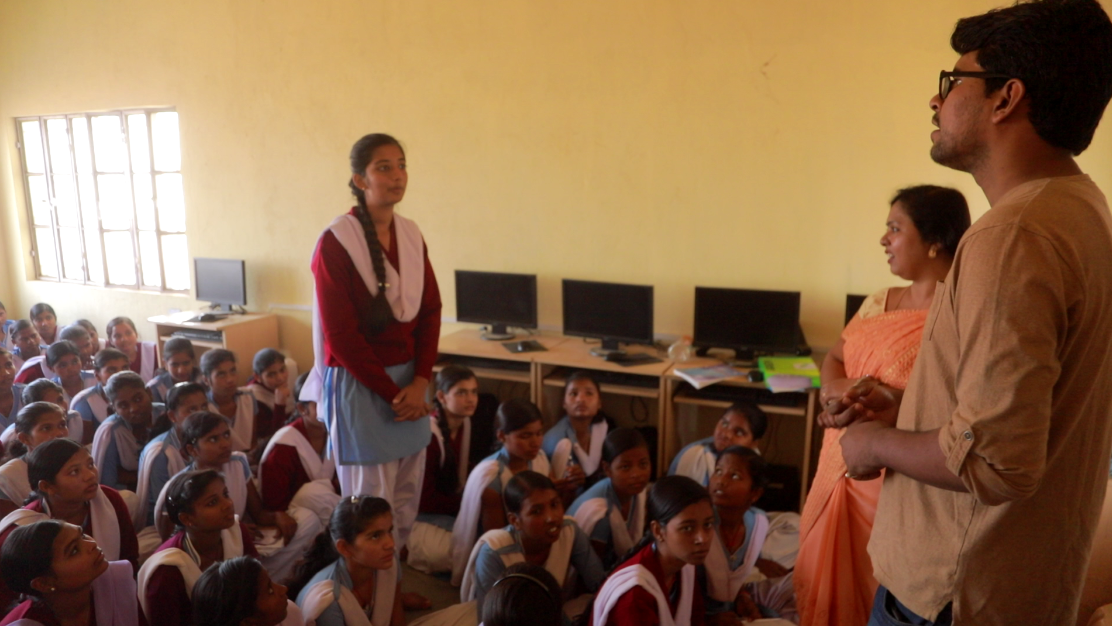
A story on Eckovation – a social learning platform started by IIT Delhi graduates Ritesh Singh and Akshat Goel – led to a ripple effect and has today resulted in the launch of an education program that is impacting hundreds.
Ritesh tells us, “The Better India had covered three stories about Eckovation. One of them was about the Eckovation teacher Sweta Singh, who was responsible for teaching 800 children in her village Chapra, through our application. This article was read by many and soon we had 30-40 teachers on board. This was very helpful.
Gradually we saw a massive impact because of these articles. Mr. Kundan Kumar, the District Magistrate of Banka, read the article and called me to inquire about the programme. With him, we started the Unnayan Banka Project because Banka was a district with a very low passing percentage. Post-implementation, we saw a considerable improvement in the learning outcomes of children”
Currently, the Unnayan project has been implemented in eight states. They are now covering about 10,000 government schools and 50 lakh children.
On Teacher’s Day in 2019, they launched the Unnayan Bihar project, inaugurated by Chief Minister Nitish Kumar.
7. Ambulances Where Doctors Could Not Reach:
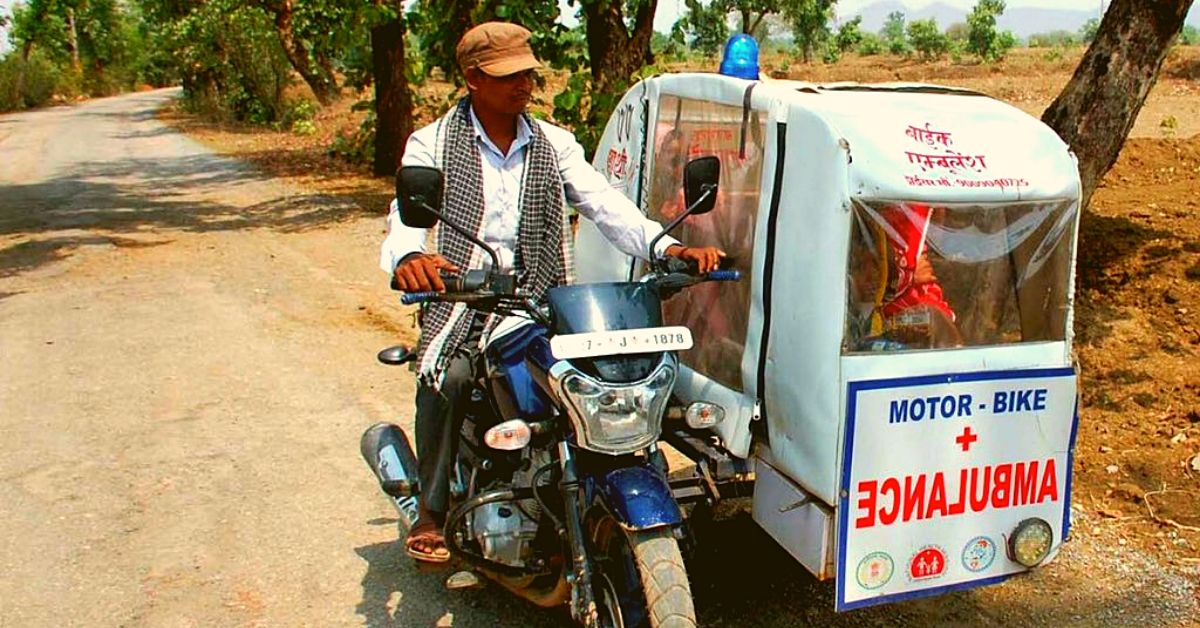
When Awanish Saran took over as the District Collector of Kabirdham district in Chhattisgarh in April 2018, he realised that the healthcare system in the region could not reach most of those who needed it, especially vulnerable citizens of Baiga and Gond tribal communities.
He formulated a system of bike ambulances by the name ‘Sangi Express’.
With this, all a person needs to do is contact the PHC and a motorbike ambulance reaches their doorstep. The ‘ambulance’ comes with an attendant, an ASHA worker, and the driver, carrying first aid supplies and protective helmets. They transport the patient to the nearest health centre where they receive treatment. Post-treatment, the patient is taken back home in the same ambulance.
The service is free of cost.
The impact of the ambulance initiative has been real. Since July 15, 2018, to May 31, 2019 — there have been 346 institutional deliveries in the region, while the number of children brought for antenatal check-ups is 1,120, according to district-level data.
“After the article about the motorbike ambulance service got published on The Better India, it helped us reach people at a larger scale. The message has spread across the boundaries of Chhattisgarh. Few districts like Sukma have also begun the process of implementation. The state government has taken assurance of replication of Motor Bike Ambulance Services in other districts as well,” says Awanish.
“The coverage has really helped for the concept to reach maximum people. Two of the difficult regions of the block, Bodla in Taregaon Jungle section and Rengakhar, have asked for initiating this innovation. We will be serving in those regions very soon. The innovation has also reached other states including Rajasthan and Assam where they are interested in replicating the model.” he adds.
8. Lakhs Raised to Help Flood Victims in Assam
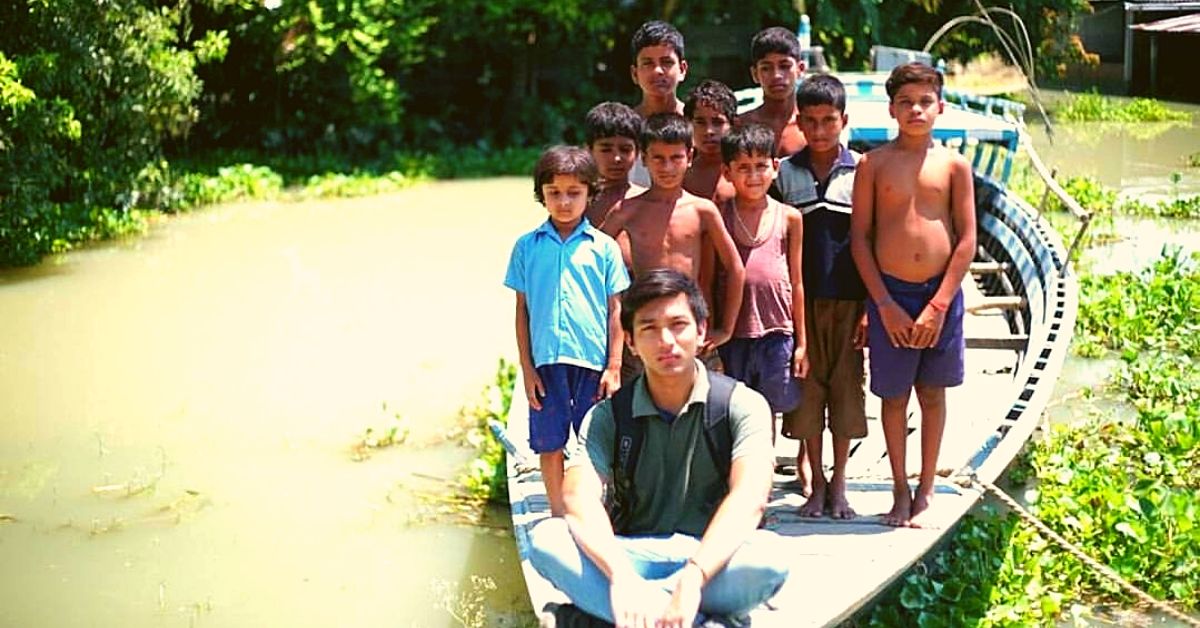
Rahul Rajkhowa, a 24-year-old musician from Assam, helps people suffering from frequent floods in the region by raising funds for them. He connects people from elsewhere with non-profits offering relief in the worst affected areas of the state, ensuring help is offered in a time-bound manner.
Rahul works as the bridge between those willing to help and those delivering relief on the ground, ensuring that people donate only those things that people on the ground actually need.
Thanking The Better India, Rahul mentions that the impact of the article we wrote, was profound.
“Apart from receiving calls and funding from donors who had read the article, I also got calls from radio channels who wanted to share my experiences with the listeners and everyone said that they had read about me in The Better India. With so many people willing to donate, I started a fundraising campaign which has covered 7 villages and 700 families. We managed to raise a fund of Rs 2.5 lakh through crowdfunding and distributed relief material to these villages.”
Rahul is now moving towards creating more concrete change by renovating and restructuring toilets in schools so that children can start going back to their education.
“One thing that you need with funding and donations is accountability and transparency. People should know that their donations were used for the correct cause and I’ll make sure that whatever funds are raised are used for the relief and repair,” he informed us.
9. Cardiologists on WhatsApp Where Healthcare Couldn’t Reach

Dr. Padmanabha Kamath, a Managaluru-based cardiologist, has helped save over 800 lives with his WhatsApp helpline to facilitate doctors in rural India.
His group, Cardiology at Doorsteps (CAD), has about 800 doctors to help aid quicker diagnosis, especially in remote rural areas where specialists are not easily accessible. After an article about them on The Better India, the group has been able to reach out to nine Indian states, multiplying the number of patients they can help.
“After an article about CAD got published on The Better India, the not so known initiative became a household name. Till now we were only in Karnataka. After the article, we were approached by doctors across India. Today, we have spanned across nine states. We now have four groups, the fourth being a pan India group. ECGs keep coming in throughout the day.
Recently, a doctor from Aurangabad posted an ECG in the WhatsApp group at 1:30 am. A doctor from Assam replied with his opinion that ECG shows a heart attack and treatment should be started right away. This feeling of enthusiasm and togetherness has been developed after your article. It has got us, doctors, together. We have completed the donation of 200 ECG machines and covered 16 districts in Karnataka, thanks to this expansion,” he says.
10. Sustainable Homes in the Age of Climate Change:
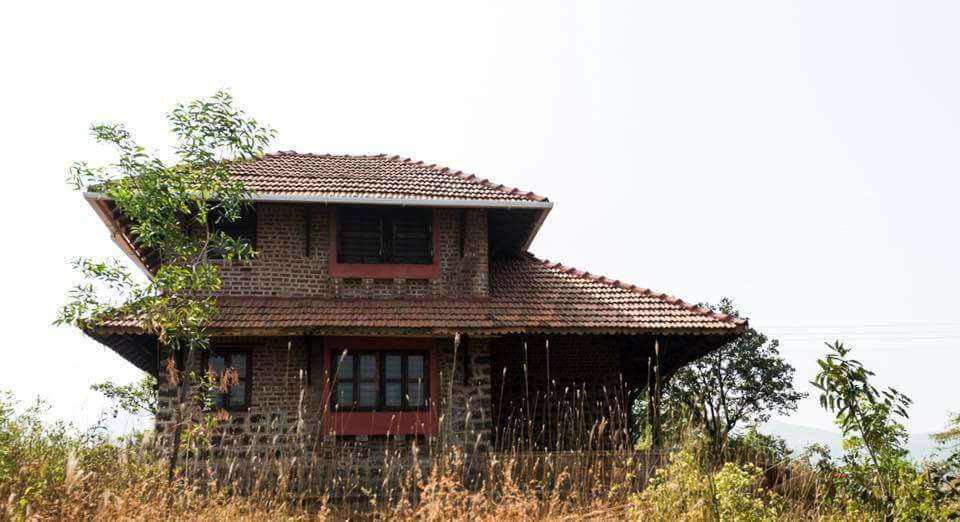
The Better India covered a series of articles on sustainable homes in India and the eco-friendly architects behind them. Priyanka and Dhruvang, a Pune-based couple, was one of them. The couple practices a form of architecture that uses natural materials and employs local labour for construction.
“There was indeed a phenomenal change that the article created. Most important of all, people are reaching out to us from all over India. We have had more than 50 inquiries for construction of various structures including farmhouses, first homes, agritourism resorts, etc.
Additionally, many architecture students, practicing architects and engineers have contacted us with an interest in learning more about natural building. The more professionals in the field mean a higher demand for natural buildings.
However, the most far-reaching effect is the fact that the article has started conversations about alternatives to cement and steel construction. It has made people aware that such practices exist, and have advantages over the conventional way of construction,” says Dhruvang.
Shriti Pandey from Uttar Pradesh is another such person behind sustainable constructions.
“As soon as the article got published, I was flooded with emails, calls, and messages on Facebook. I received roughly 80 emails and 50 calls with queries, wanting to use our technology to build something. The article definitely gave us the kind of visibility we needed at this stage. It also helped us to rethink our business model to be able to build for people who called us. We got calls from Kerela, Odisha, Gujarat, places in the North East and even Kashmir — literally every corner of the country,” she told us.
Two developers from Lucknow and Kanpur are interested in collaborating with her for affordable mass-scale projects.
11: Award-Winners Out of Ordinary People Doing Extra-ordinary Work:

This year, we got a call from Vallabhbhai Vasrambhai Marvaniya, a 97-year-old farmer from Khamdhrol village of Gujarat’s Junagadh district. We had covered him earlier for his pioneering and innovative farming methods. The call was to inform us that he had won the Padma Shri.
“I had been felicitated as ‘the first carrot farmer of Gujarat’ a few times. But very few people knew about me. One fine day, I got a call from The Better India. After a few days, my story was published. It was like watching my own biopic. Calls started coming in as soon as the story was published. Orders started coming from various states, and now we supply our carrots and seeds to eight states in the country.
Yesterday, I was informed that I have been nominated for a Padma Shri. I am 97 now. I had lived my life to the fullest. But today, just one story gave me something that no amount of money could have given.”
Thank you for supporting us in this awe-inspiring journey. Here’s to 2020.
(Edited by Vinayak Hegde)
Like this story? Or have something to share? Write to us: [email protected], or connect with us on Facebook and Twitter.

Similar Story

‘I Bake Cakes for Affordable Education’: 65-YO Uses Profits From Her Cafe to Run Village School
Canada-born Lori Chauhan moved to India in 2006. She and her husband Kunwar started Garhwal English Medium School in Uttarakhand to provide affordable, quality education to rural children.
Read more >
If you found our stories insightful, informative, or even just enjoyable, we invite you to consider making a voluntary payment to support the work we do at The Better India. Your contribution helps us continue producing quality content that educates, inspires, and drives positive change.
Choose one of the payment options below for your contribution-
By paying for the stories you value, you directly contribute to sustaining our efforts focused on making a difference in the world. Together, let's ensure that impactful stories continue to be told and shared, enriching lives and communities alike.
Thank you for your support. Here are some frequently asked questions you might find helpful to know why you are contributing?


This story made me
-
97
-
121
-
89
-
167












